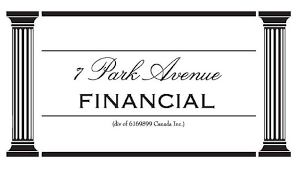|
Working Capital Financing: Your Bridge Over Troubled Cash Flow Waters
The Canadian Business Owner's Guide to Never Running Out of Cash Again
YOU ARE LOOKING FOR CASH FLOW FINANCING SOLUTIONS
Is Cash Flow Financing the Answer to Your Business Woes
UPDATED 07/25/2025
ARE YOU UNAWARE OR DISSATISFIED WITH YOUR CURRENT BUSINESS FINANCING OPTIONS?
WELCOME TO 7 PARK AVENUE FINANCIAL
CONTACT US
CALL NOW - DIRECT LINE - 416 319 5769 - Let's talk or arrange a meeting to discuss your needs

How Smart Businesses Use Cash Flow for Working Capital Advantage
The Importance of Cash Flow Financing
The Cash Flow Crisis Choking Canadian Businesses
Your business is profitable on paper, but your bank account tells a different story.
Outstanding invoices sit unpaid while rent, payroll, and supplier bills demand immediate attention. This cash flow gap strangles growth and creates sleepless nights.
Let the 7 Park Avenue Financial team show you how working capital solutions provide immediate access to your earned revenue, transforming pending invoices into available cash when you need it most.
Cash flow financing often brings business owners and financial managers into the world of mistakes! As business owners, we all make them at some point.
So we're talking about wrong choices in working capital financing and how the right types of cash flow financing can turn adversity into an opportunity for growth and profits.
Cash Flow Financing as a Business Health Indicator
While the primary purpose of cash flow financing is to meet immediate financial obligations and sustain day-to-day operations, it can also serve as a real-time health check for your business.
Regular reliance on external cash flow solutions might indicate deeper operational inefficiencies or issues with a business model. On the contrary, businesses that use these solutions strategically during expansion phases or market entries might be better poised for sustainable growth.
The Need for Working Capital
All Canadian businesses need working capital, permanently, or, as is often common, on a "bulge" basis from time to time.
In essence, you are financing your operating cycle, and most business owners intuitively know their industry has a unique cycle—that being simply that working capital represents the time it takes for a dollar to flow through inventory, accounts receivable, and back to cash.
That can be a long journey to final cash flow and working capital!
The Challenge for Established Businesses
Is your company large? Established?
Congratulations, of course—you probably have a better chance of seeking what people refer to as "traditional" forms of financing. Quite frankly, we're not sure anymore what "traditional" means, as the lines are getting blurred between what some consider nontraditional working capital financing.
If you don't know it already, alternative financing is on a major upswing in Canada.
Alternative Financing Solutions
Maybe we're hanging around with the wrong crowd, but we seem to meet more and more clients that are unable to access capital for growth and development. They seek to enhance working capital in a variety of methods.
Those include:
The "Cash Is King" Principle
Bottom line?
Focus on liquidity, so if you have positive working capital as calculated by the textbooks (current assets minus current liabilities), you must, therefore, monetize those assets into the "cash is king" model.
The harsh reality is that as your textbook calculation of working capital goes up, your actual cash flow is negative, given that your firm's money is tied up in inventory and receivables on the balance sheet, which seem to be collected more slowly every year in our opinion and those of our clients.
The Reality of Business
Naturally, if you are able to be paid in cash at the time of sale, or if inventories turn very quickly, and billed customers pay promptly, well, suffice it to say the cash flow financing pressures are eased quite a bit—but the reality of business usually does not give us that luxury. Consider us jealous.
Understanding Your Financing Needs
We are often amazed at how many clients we meet who are looking for proverbial "working capital" but are in a position of not being able to define the type of financing they think they need.
The ultimate cash flow support tool is the chartered bank operating line of credit that helps fund changes in working capital accounts, but as we have hinted, many business owners do not qualify for these facilities.
They consider moving to either a receivable financing facility or an asset-based line of credit. These come at a higher cost but provide liquidity often 100 percent greater than might have been achieved previously, had they been bankable.
Choosing the Right Financing Solution
So what's our takeaway tip here? Simply that you must look beyond the rate and focus on what collateral you are providing to get the liquidity you need.
Ultimately, you need to understand your particular needs and choose a financing solution that provides you with the cash flow financing to meet your business needs, as well as grow your business.
Key Points
Working Capital Definition: Working capital is the difference between a company's current assets (like cash, accounts receivable, and inventory) and its current liabilities (such as accounts payable). It represents the short-term funds available to operate and invest in the business as part of your operating cash flow. Positive working capital indicates a company can cover its short-term liabilities with its short-term assets, signaling good financial health.
The Importance of Cash Flow: Cash flow represents the movement of money into and out of a business. It shows how much cash a business has on hand and is a critical indicator of financial health. Even profitable businesses can fail if they run out of cash.
Traditional versus Alternative Financing: Traditional financing typically refers to standard bank loans or lines of credit. Alternative financing encompasses nontraditional methods like receivable financing, asset-based lending, and others. Not all businesses qualify for traditional financing due to stringent criteria.
Asset Monetization: This involves converting noncash assets (like accounts receivable or inventory) into cash or cash equivalents, typically through financing mechanisms. Monetizing assets boosts liquidity, helping businesses manage their cash flow more effectively and ensuring they can meet financial obligations.
Case Study
The Manufacturing Turnaround: How We Doubled Revenue With Working Capital Solutions
Toronto-based custom fabrication company, faced a classic working capital crunch. Despite $500,000 in outstanding invoices, they couldn't purchase raw materials for new orders due to 60-day payment terms from major clients.
After partnering with 7 Park Avenue Financial for invoice factoring, ABC accessed 85% of their invoice value within 48 hours. This immediate cash flow allowed them to:
- Purchase materials for three major contracts worth $300,000
- Hire two additional skilled welders
- Negotiate early payment discounts with steel suppliers
Within six months, company doubled their monthly revenue and improved profit margins by 15% through strategic supplier discounts. The working capital solution transformed their business from reactive order-taking to proactive growth planning.
Key Takeaways
- Cash conversion cycle optimization - Understanding how to minimize the time between cash outflows and inflows drives 80% of working capital efficiency improvements
- Accounts receivable management - Effective invoice and collection processes account for the majority of cash flow stability in service-based businesses
- Inventory turnover acceleration - Faster inventory movement through improved demand forecasting and supplier relationships creates most working capital benefits for product businesses
- Supplier payment timing - Strategic management of payable schedules while maintaining relationships provides significant cash flow advantages without additional costs
- Seasonal cash flow forecasting - Predicting and preparing for cyclical business patterns prevents most working capital crises before they occur
Conclusion
Options? They abound—which many Canadian business owners and financial managers don't realize. Be they traditional or alternative, one or several of them will work for your firm.
Call 7 Park Avenue Financial, a trusted, credible, and experienced Canadian business financing advisor who will put you on a clear path to the solution for working capital financing.
FAQ: Frequently Asked Questions
What is cash flow financing? It's a method where businesses obtain funds based on their expected cash flows, allowing them to manage their working capital efficiently.
Why is working capital crucial for a business? Working capital ensures businesses can cover short-term liabilities, indicating financial health and ensuring smooth daily operations.
What's the difference between traditional and alternative financing? Traditional financing typically involves bank loans, while alternative financing offers nontraditional methods like receivable financing or asset-based lending.
How does cash flow financing benefit my business? It offers liquidity, allowing businesses to handle unforeseen challenges, invest in growth, and ensure financial stability in areas such as free cash flow.
Is cash flow financing suitable for all businesses? While it's especially beneficial for businesses that don't qualify for traditional loans, any business seeking to optimize liquidity can benefit via financial analysis of funding needs.
What's the difference between cash flow financing and equity financing? Cash flow financing involves borrowing against future revenues, while equity financing entails selling a portion of the business ownership for capital.
How do interest rates for cash flow financing compare to traditional loans? Rates might be higher than traditional loans, reflecting the higher risk associated with basing loans on anticipated cash flows.
Can startups leverage cash flow financing? Yes, especially if they have strong projected revenues, but they should carefully assess the repayment terms and costs in trade finance in order to get paid early.
Are there any industries particularly suited for cash flow financing? Industries with predictable revenue streams, like subscription-based models, often find cash flow and working capital financing beneficial when assessing the company's working capital needs in areas such as supply chain finance and credit risk.
How do I determine if my business needs cash flow financing? Assess your working capital management needs and review financial statements, future revenue projections, and growth opportunities to determine if such financing aligns with your business goals.
Citations
- Business Development Bank of Canada. "SME Financing in Canada: Challenges and Opportunities." BDC Research Report, 2024. https://www.bdc.ca
- Statistics Canada. "Small Business Quarterly Financial Statistics." Government of Canada Publications, 2024. https://www.statcan.gc.ca
- Canadian Federation of Independent Business. "Cash Flow Challenges Facing Small Business." CFIB Policy Research, 2024. https://www.cfib-fcei.ca
- Industry Canada. "Alternative Financing for Small and Medium Enterprises." Innovation, Science and Economic Development Canada, 2024. https://www.ic.gc.ca
- 7 Park Avenue Financial ." Working Capital Business Cash Flow Funding" https://www.7parkavenuefinancial.com/canadian-business-financing-capital-funding.html
- Deloitte Canada. "Working Capital Management Best Practices." Financial Advisory Services, 2024. https://www.deloitte.com/ca

' Canadian Business Financing With The Intelligent Use Of Experience '
STAN PROKOP
7 Park Avenue Financial/Copyright/2025

ABOUT THE AUTHOR: Stan Prokop is the founder of 7 Park Avenue Financial and a recognized expert on Canadian Business Financing. Since 2004 Stan has helped hundreds of small, medium and large organizations achieve the financing they need to survive and grow. He has decades of credit and lending experience working for firms such as Hewlett Packard / Cable & Wireless / Ashland Oil
|